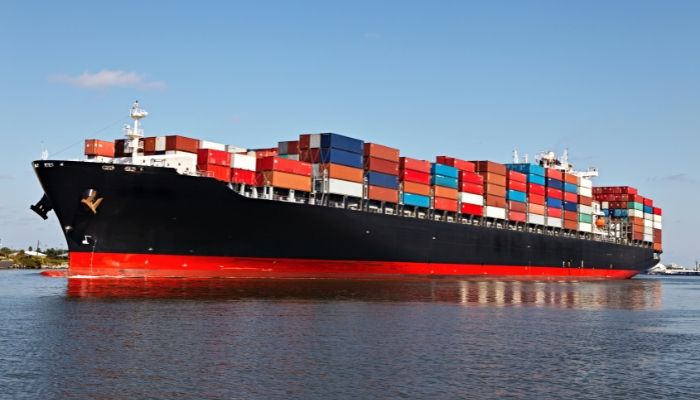Technology
Navigating the Digital Seas: Cybersecurity Challenges in the Shipping Industry

- Cyberattacks on the shipping industry have increased, disrupting cargo shipments, compromising safety, and causing financial losses.
- High-profile incidents like the 2017 NotPetya attack on Maersk highlight the industry’s vulnerability and the need for stronger cybersecurity measures.
- Collaboration between shipping companies, port authorities, and governments is essential to enhance cybersecurity and protect global trade.
Shipping, which is an important component of global trade, faces a significant danger from cyberattacks. The digital threat has risen to be one of the biggest dangers to maritime operations impacting everything from cargo shipping to ports logistics.
The Evolution of Cyber Threats in Shipping
The cyber-security history in the industry of shipping is fairly recent, but it’s quickly evolving. Since the beginning of 2000, the transformation to digital technology in the industry started by integrating electronic navigation systems as well as automated ports operations. The improvements in efficiency were great, but they also created new risks.
Initially, cyber-attacks were uncommon and typically caused only minor interruptions. As ships and ports grew more dependent upon interconnected systems of digital communication as well, the sophistication and frequency of cyber attacks increased. As of the year 2010 Cyber threats had grown to be major concerns for maritime security specialists.
Impact on Maritime Operations
Cyberattacks can have devastating effects for the shipping industry. If a cyberattack strikes you, it may:
- Interrupt Cargo Shipments: Delays in the shipping schedules could cause ripples throughout the supply chain, impacting the consumer and business alike. A ransomware attack against a large shipping business can impede the flow of cargo, which can result in massive economic losses.
- Compromise Security Cyber Attacks may affect navigation systems, resulting in dangerous situations or accidents in the ocean. Hackers are able to alter GPS data, or shut down critical equipment, placing ships and crew members in danger.
- Financial losses Costs of cyberattacks can include ransom payment, restoration of systems as well as revenue loss because of operational disruption. Businesses also have to pay higher cost of insurance as well as potential legal liability.
High-Profile Incidents
A number of high-profile cases have demonstrated the security risks of the shipping industry in the face of cyberattacks. These events provide a clear reminder of the necessity for a strong cybersecurity practices:
- 2017. NotPetya Attack one of the biggest cyberattacks in the history of maritime was in 2017 in the year 2017 when the NotPetya malware disrupted the operations of Maersk One of the largest shipping firms. The attack resulted in an estimated $300 million of losses, and required weeks of time to recuperate from.
- Port of San Diego Ransomware Attack in 2018: A ransomware attack hit San Diego’s Port of San Diego, crippling its IT systems as well as affecting the port’s operations. The incident highlighted the vulnerability of ports infrastructure against cyber attacks.
- COSCO Cyber Attack in 2018 Chinese shipping company COSCO was hit by a cyberattack which caused disruption to its operations in the Americas. COSCO had to close its networks for several days to thwart the threat.
Strengthening Cybersecurity
In order to combat the increasing threats of cyberattacks, the shipping industry has to be a leader in cybersecurity. This includes:
- Utilizing Advanced Security Measures: Making use of the most recent cybersecurity technology to safeguard digital systems against attack. This is a good example of security systems for intrusion detection, firewalls and encryption.
- Training personnel Making sure that employees have been properly trained in cybersecurity procedures and alert to potential dangers. Regular training and awareness courses could help avoid human error that can lead to cybersecurity breaches.
- Regularly scheduled audits and updates Conducting regular security audits and updating the systems to eliminate weaknesses. Regularly assessed security checks help to find weak areas and assure that the defenses are in good condition.
Collaborative Efforts
Collaboration is essential to improve security in the maritime industry. Port authorities, shipping companies as well as governments need to work in tandem to exchange information on the threats they face and their good methods. A collaborative approach will help create a stronger infrastructure to defend against cyber attacks.
- Information sharing The establishment of platforms to share threat information will help businesses stay abreast about new threats and gain from each other’s mistakes.
- Industry Standards: Affirming and adhering to the industry standard and the best practices, including those set out by the International Maritime Organization (IMO) as well as the International Association of Classification Societies (IACS) and can improve overall security.
- Private-Private Partnerships Private and public sector organizations can join forces in an effort to increase security awareness, create innovative technologies and develop regulations that promote robust cybersecurity best practices.
Conclusion
The industry of shipping is at an important juncture in which the integration of modern digital technology has resulted in the industry’s new efficiencies as well as vulnerabilities. In recognizing the magnitude of the cyber-attack and taking appropriate measures it can secure the operations of its members and allow global trade to flourish without growing threat of cyber attacks. The importance of cybersecurity has become an option, but rather a requirement to ensure the future of maritime trade.





















































